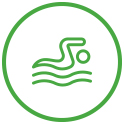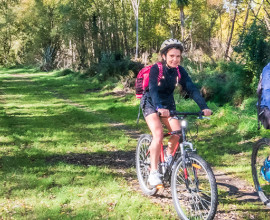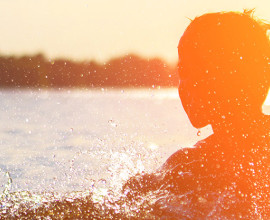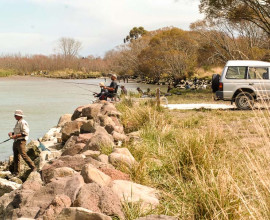Recreational and amenity opportunities

Recreation and amenity opportunities provided by Canterbury's water bodies are of social, cultural and economic benefit to the region.
Under the Canterbury Water Management Strategy (CWMS), goals were set to help make a difference to our environment and how natural resources are managed.
Environment Canterbury reports on progress on behalf of CWMS partners. Note there is no consistent information source on the extent and quality of water-related recreational activities in Canterbury, with the exception of Fish & Game's angler surveys. Lacking this information, the benefits of recreation – including tourism benefits – cannot be accurately described or measured.
Here's how things are progressing against 2020 goals. View information on:
- Water-based recreational opportunities
- Recreational water flows
- Freshwater angling
- Recreational water quality
Water-based recreational opportunities
2020 goal: A positive trend in the availability and/or quality of recreational opportunities in each zone.
Has the goal been met?
Measuring trends for this goal is challenging given the diversity of options available and numerous ways people choose to enjoy Canterbury's lakes and rivers. The CWMS Regional Committee's Recreation and Amenity Working Group gathered information to better understand the availability, diversity and trends of recreation and amenity opportunities in the region. Numerous projects have been undertaken to map and improve the quality of recreational spots across Canterbury.
- Zone Committees have been implementing actions to improve recreational opportunities in their zone. The Hurunui SPLASH project aims to improve local swimming holes in the region, including Balmoral Recreation Reserve, Riverside Reserve, Waitohi River and Dog Stream.
- A new development for recreation activities was opened in May 2019 at The Willows in West Melton.
- Lake and river access information, and the facilities available at local recreation spots, can be found on the 'StoryMap' of public waterbodies in the region and on the Canterbury Maps website.
- Councils will implement new national policy – the National Policy Statement for Freshwater Management (NPS-FM) and the National Environmental Standards for Freshwater (NES-F) – which include human health for recreation as a compulsory value.
- Water Zone Committees will continue to consider projects that provide for recreation in their region.
Recreational water flows
2020 goal: Made progress toward achieving environmental flows.
Has the goal been met?
Environmental flows and water take limits have been set for relevant Canterbury rivers. Restrictions on the volume that can be taken from rivers, is the most significant method for maintaining instream environmental values such as natural character, recreation, cultural values and aquatic ecology. These values are given statutory backing in regional plans and consents. Challenges lie in understanding and enabling flows that support a range of recreational activities.
- We monitor river flow throughout Canterbury.
- We provide real-time information on irrigation restrictions across most rivers in Canterbury.
- The Ashburton water consent review process seeks to set new minimum flow conditions on existing consents to take water from sources that contribute to stream depletion in the Hakatere / Ashburton River catchment.
- We will continue to monitor flow levels and place restrictions on water abstractions to maintain flows.
Freshwater angling
There is no 2020 goal for freshwater angling.
- Fish & Game continues to undertake projects to increase fishing opportunities.
- Since 2018, we prioritised fish screens in its compliance programme.
- We are working with consent holders to upgrade their fish screens and/or put in place interim measures.
- Fish & Game has developed an Adaptive Management Strategy to help salmon stocks recover.
- We will continue to implement work programmes to support fish screen compliance.
- The National Institute of Water & Atmospheric Research (NIWA) is expected to produce the next National Angler Survey in 2021/22.
Recreational water quality
2020 goal: Of the lake and river sites used for contact recreation, an increase in the percentage that meet recreational water quality guidelines.
Has the goal been met?
Our recreational water quality monitoring programme assesses the microbial contamination of a site and grades whether it is suitable for contact recreation.
Environment Canterbury’s latest report (2019/20) on water quality for contact recreation (PDF File, 8.5MB) reported that 76% of graded freshwater sites are considered as being generally suitable for contact recreation – 100% of lake sites and 64% of river sites. Compared to the previous year's report, four freshwater sites improved a grade, while three sites decreased a grade.
The latest figures show an increase in freshwater sites suitable for contact recreation from previous monitoring results of 58% in 2015/16 and 70% in 2009/10.
- Land, Air, Water Aotearoa (LAWA) has a comprehensive online guide based on the latest water quality information that enables the public to decide on the best place to swim.
- We maintain up to date water quality monitoring information for popular swimming sites and release river warnings for popular recreational sites.
- We will continue to monitor and report on freshwater recreation sites annually.



